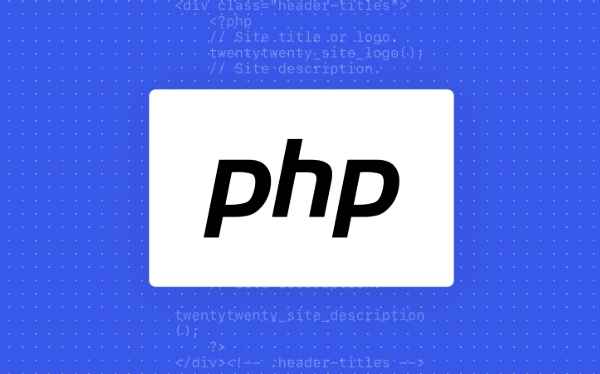PHP sessions are stored on the server as files in a directory specified by the session.save_path setting. 1. By default, they are stored in a temporary directory like /tmp. 2. The exact path can be checked using phpinfo() or session_save_path(). 3. Session storage can be customized by changing session.save_path in php.ini or at runtime with session_save_path() before session_start(). 4. In clustered environments, file-based storage is not ideal; database or Redis-backed storage should be used instead. 5. Session files are cleaned up by PHP’s garbage collector based on session.gc_maxlifetime, typically after 24 minutes, though cleanup timing may vary.

PHP sessions are stored on the server by default, typically in a temporary directory as files. Each session gets its own file, named based on the session ID, and these files contain the serialized session data you’ve set in your PHP scripts.

Where exactly are they stored?
The exact location depends on your server configuration. By default, PHP uses the session.save_path setting defined in your php.ini file. On many Linux systems, this is something like /tmp, but it can vary depending on hosting environments or custom setups.
You can check where sessions are being saved by using the phpinfo() function or running this snippet:

echo session_save_path();
This will show you the actual path your server is using right now.
Common places:

- Local development environments might use something like
/var/lib/php/session - Shared hosting may use a specific directory per user
- Some servers use subdirectories for better performance when handling lots of sessions
Can session storage be changed or customized?
Yes, you can change where sessions are stored either in your php.ini file or at runtime using session_save_path() before calling session_start().
For example:
session_save_path("/path/to/your/custom/session/directory");
session_start();Make sure the directory is writable by the web server user (like www-data or _www). Also, avoid placing session directories under web-accessible folders to prevent security risks.
If you're working in a clustered or distributed environment (like multiple servers behind a load balancer), file-based sessions won’t work well. In that case, consider switching to database-backed or Redis-based session storage.
How long do session files stay on the server?
Session files aren't kept forever. PHP has a built-in garbage collection mechanism that removes old session files based on the session.gc_maxlifetime setting (default is 1440 seconds, or 24 minutes).
However, the garbage collector doesn't run on every request—it’s triggered randomly based on the session.gc_probability and session.gc_divisor settings. This means some sessions may stick around a little longer than expected before being cleaned up.
If you need tighter control over session expiration, especially for security-sensitive apps, you can implement your own cleanup script or use a dedicated session handler.
That's how PHP handles session storage under the hood. It's straightforward for most small to medium applications, but worth revisiting if you scale up or move to a multi-server setup.
The above is the detailed content of Where are PHP sessions stored?. For more information, please follow other related articles on the PHP Chinese website!

Hot AI Tools

Undress AI Tool
Undress images for free

Undresser.AI Undress
AI-powered app for creating realistic nude photos

AI Clothes Remover
Online AI tool for removing clothes from photos.

Clothoff.io
AI clothes remover

Video Face Swap
Swap faces in any video effortlessly with our completely free AI face swap tool!

Hot Article

Hot Tools

Notepad++7.3.1
Easy-to-use and free code editor

SublimeText3 Chinese version
Chinese version, very easy to use

Zend Studio 13.0.1
Powerful PHP integrated development environment

Dreamweaver CS6
Visual web development tools

SublimeText3 Mac version
God-level code editing software (SublimeText3)
 PHP Variable Scope Explained
Jul 17, 2025 am 04:16 AM
PHP Variable Scope Explained
Jul 17, 2025 am 04:16 AM
Common problems and solutions for PHP variable scope include: 1. The global variable cannot be accessed within the function, and it needs to be passed in using the global keyword or parameter; 2. The static variable is declared with static, and it is only initialized once and the value is maintained between multiple calls; 3. Hyperglobal variables such as $_GET and $_POST can be used directly in any scope, but you need to pay attention to safe filtering; 4. Anonymous functions need to introduce parent scope variables through the use keyword, and when modifying external variables, you need to pass a reference. Mastering these rules can help avoid errors and improve code stability.
 How to handle File Uploads securely in PHP?
Jul 08, 2025 am 02:37 AM
How to handle File Uploads securely in PHP?
Jul 08, 2025 am 02:37 AM
To safely handle PHP file uploads, you need to verify the source and type, control the file name and path, set server restrictions, and process media files twice. 1. Verify the upload source to prevent CSRF through token and detect the real MIME type through finfo_file using whitelist control; 2. Rename the file to a random string and determine the extension to store it in a non-Web directory according to the detection type; 3. PHP configuration limits the upload size and temporary directory Nginx/Apache prohibits access to the upload directory; 4. The GD library resaves the pictures to clear potential malicious data.
 Commenting Out Code in PHP
Jul 18, 2025 am 04:57 AM
Commenting Out Code in PHP
Jul 18, 2025 am 04:57 AM
There are three common methods for PHP comment code: 1. Use // or # to block one line of code, and it is recommended to use //; 2. Use /.../ to wrap code blocks with multiple lines, which cannot be nested but can be crossed; 3. Combination skills comments such as using /if(){}/ to control logic blocks, or to improve efficiency with editor shortcut keys, you should pay attention to closing symbols and avoid nesting when using them.
 Tips for Writing PHP Comments
Jul 18, 2025 am 04:51 AM
Tips for Writing PHP Comments
Jul 18, 2025 am 04:51 AM
The key to writing PHP comments is to clarify the purpose and specifications. Comments should explain "why" rather than "what was done", avoiding redundancy or too simplicity. 1. Use a unified format, such as docblock (/*/) for class and method descriptions to improve readability and tool compatibility; 2. Emphasize the reasons behind the logic, such as why JS jumps need to be output manually; 3. Add an overview description before complex code, describe the process in steps, and help understand the overall idea; 4. Use TODO and FIXME rationally to mark to-do items and problems to facilitate subsequent tracking and collaboration. Good annotations can reduce communication costs and improve code maintenance efficiency.
 How Do Generators Work in PHP?
Jul 11, 2025 am 03:12 AM
How Do Generators Work in PHP?
Jul 11, 2025 am 03:12 AM
AgeneratorinPHPisamemory-efficientwaytoiterateoverlargedatasetsbyyieldingvaluesoneatatimeinsteadofreturningthemallatonce.1.Generatorsusetheyieldkeywordtoproducevaluesondemand,reducingmemoryusage.2.Theyareusefulforhandlingbigloops,readinglargefiles,or
 Learning PHP: A Beginner's Guide
Jul 18, 2025 am 04:54 AM
Learning PHP: A Beginner's Guide
Jul 18, 2025 am 04:54 AM
TolearnPHPeffectively,startbysettingupalocalserverenvironmentusingtoolslikeXAMPPandacodeeditorlikeVSCode.1)InstallXAMPPforApache,MySQL,andPHP.2)Useacodeeditorforsyntaxsupport.3)TestyoursetupwithasimplePHPfile.Next,learnPHPbasicsincludingvariables,ech
 Quick PHP Installation Tutorial
Jul 18, 2025 am 04:52 AM
Quick PHP Installation Tutorial
Jul 18, 2025 am 04:52 AM
ToinstallPHPquickly,useXAMPPonWindowsorHomebrewonmacOS.1.OnWindows,downloadandinstallXAMPP,selectcomponents,startApache,andplacefilesinhtdocs.2.Alternatively,manuallyinstallPHPfromphp.netandsetupaserverlikeApache.3.OnmacOS,installHomebrew,thenrun'bre
 How to access a character in a string by index in PHP
Jul 12, 2025 am 03:15 AM
How to access a character in a string by index in PHP
Jul 12, 2025 am 03:15 AM
In PHP, you can use square brackets or curly braces to obtain string specific index characters, but square brackets are recommended; the index starts from 0, and the access outside the range returns a null value and cannot be assigned a value; mb_substr is required to handle multi-byte characters. For example: $str="hello";echo$str[0]; output h; and Chinese characters such as mb_substr($str,1,1) need to obtain the correct result; in actual applications, the length of the string should be checked before looping, dynamic strings need to be verified for validity, and multilingual projects recommend using multi-byte security functions uniformly.






